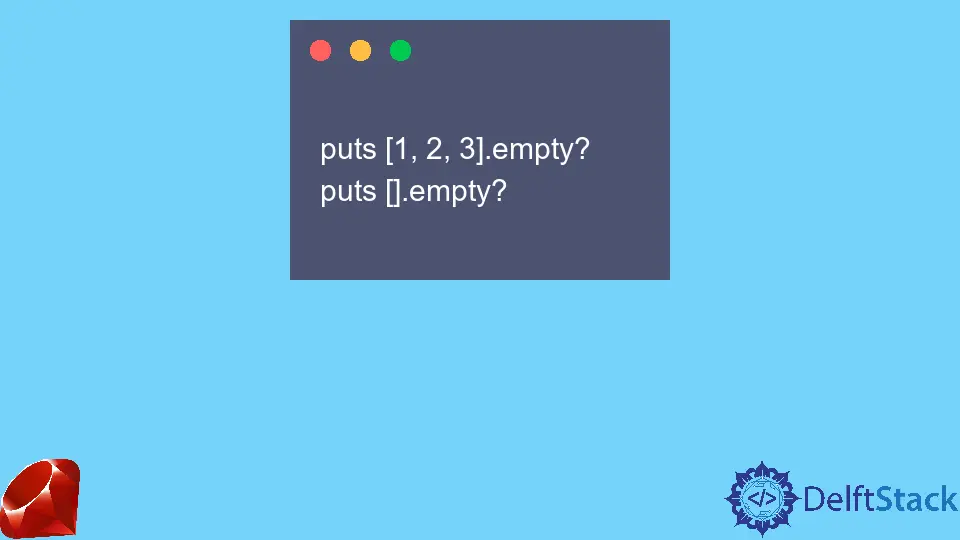nil, empty and blank in Ruby

When working with Ruby, you’ll often come across the terms nil, empty, and blank. These terms may seem interchangeable at first glance, but they have distinct meanings and implications in your code. Understanding the differences between them is crucial for writing clean, efficient, and bug-free Ruby applications.
In this tutorial, we’ll delve into what nil, empty, and blank mean in Ruby, how to check for each, and when to use them effectively. By the end of this article, you’ll have a solid grasp of these concepts, empowering you to make better coding decisions in your Ruby projects.
What is nil in Ruby?
In Ruby, nil is an object that represents the absence of a value or a non-existent value. It is an instance of the NilClass and is often used as a default value for uninitialized variables. When a method returns nil, it indicates that there is no meaningful value to return.
To check if a variable is nil, you can use the nil? method. Here’s a simple example:
my_variable = nil
puts my_variable.nil?
Output:
true
In this example, we assign nil to my_variable and then check if it is nil using the nil? method. The output is true, confirming that my_variable indeed holds no value.
Using nil can be particularly useful for initializing variables or signaling that a variable has not yet been set. However, overusing nil can lead to issues like NoMethodError if you try to call a method on a nil object. It’s essential to check for nil values before performing operations that expect an object.
What is an empty object in Ruby?
An empty object in Ruby is an object that exists but contains no elements. This concept is most commonly associated with collections such as arrays and hashes. For instance, an empty array is defined as [], and an empty hash is defined as {}.
To check if an object is empty, you can use the empty? method. Here’s an example:
my_array = []
puts my_array.empty?
Output:
true
In this code snippet, we create an empty array and then call the empty? method on it. The output is true, indicating that my_array is indeed empty.
Using empty objects can be beneficial when you want to initialize a collection without adding any elements initially. This allows you to build up the collection later without running into nil-related issues. However, be cautious when using empty objects, as they can lead to unexpected behavior if you forget to populate them before accessing their elements.
What is a blank object in Ruby?
The term “blank” in Ruby is somewhat more nuanced. An object is considered blank if it is either nil, empty, or a whitespace string. To determine if an object is blank, you can use the blank? method, which is provided by Rails. If you’re not using Rails, you can define your own method to check for blank values.
Here’s how you can check for blank objects:
class Object
def blank?
respond_to?(:empty?) ? empty? : !self
end
end
my_string = " "
puts my_string.blank?
Output:
true
In this example, we define a blank? method that checks if the object is empty or nil. We then test it on a string that contains only whitespace. The output is true, indicating that the string is indeed blank.
Using blank checks can simplify your code when validating user input or processing data. For instance, you may want to treat a string of spaces the same way as nil or an empty string. This helps to ensure that your application behaves consistently, even when faced with unexpected input.
Summary
Understanding the distinctions between nil, empty, and blank in Ruby is essential for effective coding. Nil signifies the absence of a value, empty denotes an object that exists but contains no elements, and blank encompasses both nil and empty states, along with whitespace strings. By mastering these concepts, you can enhance your Ruby applications, making them more robust and less error-prone.
Incorporating these checks into your code will not only prevent common errors but also improve the overall readability and maintainability of your projects. Remember, the clearer your code, the easier it is for others (and your future self) to understand and work with it.
FAQ
-
What is the difference between nil and empty in Ruby?
nil represents a non-existent value, while empty refers to an object that exists but has no elements. -
How can I check if a variable is nil in Ruby?
You can use thenil?method to check if a variable is nil.
-
What does the empty? method do in Ruby?
The empty? method checks if a collection (like an array or hash) has no elements. -
Can a string be considered blank in Ruby?
Yes, a string is considered blank if it is nil, empty, or consists only of whitespace. -
How can I define a blank? method in Ruby?
You can create a custom blank? method that checks for nil, empty, or whitespace strings.
Aminul Is an Expert Technical Writer and Full-Stack Developer. He has hands-on working experience on numerous Developer Platforms and SAAS startups. He is highly skilled in numerous Programming languages and Frameworks. He can write professional technical articles like Reviews, Programming, Documentation, SOP, User manual, Whitepaper, etc.
LinkedIn